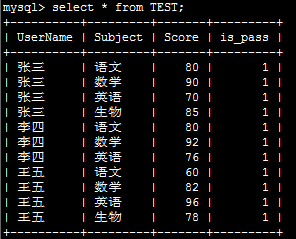django 自定义过滤器(filter)处理较为复杂的变量方法
简述:django 在views中有数据需要通过字典(dict)的方式传递给template,该字典中又包含了字典,而且字典中的键值还是一个对象,在template中处理传递过来的数据的时候,字典不能通过键值的方式取出原有数据,对象不能通过(.)的方式直接取出数据,通过大量地查阅资料,最终通过过滤器(filter)的方式解决!
1、需要传递到template的数据,在 views.py 中的index函数中
latest_article_list 是一个Article对象的列表,包含文章ID、作者、发布时间、分类等各种信息
dic['tag_list'] 为一个列表(文章标签列表)
articles_info是一个以字典为元素的列表,而且该字典中 键'article'对应的不是普通变量,而是一个Article对象
view.py
def index(request):
latest_article_list = Article.objects.query_by_time()
articles_info = []
dic = {}
for article in latest_article_list:
taginfo = Article.objects.get(id=article.id)
dic['tag_list'] = taginfo.tags.all()
dic['article'] = article;
articles_info.append(dic)
dic = {}
loginform = LoginForm()
context = {'articles_info':articles_info, 'loginform':loginform}
return render(request, 'index.html', context)
2、template如何引用views传递过来的变量值?
在index.html中,可以先遍历列表,得到每一个字典变量;
{% for article_info in articles_info %}
遍历 articles_info 之后的article_info 为一个字典,通过前面的views可以知道里面包含了一个article对象和一个tag_list列表;
对于article_info这个字典变量,在模板中却不能通过键值对获取对应的值,更别说获取Article对象中ID、作者、发布时间等属性值了,为了解决这一问题,这里就需要过滤器才能实现;
3、自定义过滤器
1)、在app目录下建立templagetags文件夹,在此目录下建立空文件 __init__.py和过滤器文件articleinfo.py;
2)、编辑 articleinfo.py,添加过滤器 get_key 和get_attr,get_key获取字典不同键对应的值,get_attr获取Article对象中不同字段对应的值;
articleinfo.py
from django import template
register = template.Library()
@register.filter
def get_key(d, key_name):
return d.get(key_name)
@register.filter
def get_attr(d, m):
if hasattr(d, m):
return getattr(d, m)
4、模板中使用过滤器,获取各种变量值;
index.html中,首先需要通过标签加载上面定义的过滤器文件 articleinfo.py,然后就是index.html模板中调用过滤器了,具体的使用方法见下面的index.html文件;
{% load articleinfo %}
下面的index.html中变量使用的部分代码,使用了双重过滤器提取出了所需要的变量;
比如第4行中
{{ article_info|get_key:"article"|get_attr:"id" }}
首先通过 article_info|get_key:"article" 获取到字典中的article对象,但此处需要的是article对象中的ID属性,由于并不能通过{{ article_info|get_key:"article".id }} 获取到对应的ID值,所以只好双重过滤器来实现了。
index.html
{% for article_info in articles_info %}
<div class="row">
<article class="col-xs-12">
<h3><a id="article_title", href="/focus/{{ article_info|get_key:" rel="external nofollow" article"|get_attr:"id" }}">{{ article_info|get_key:"article"|get_attr:"title" }}</a></h3>
<div class="article_info">
<span class="">{{ article_info|get_key:"article"|get_attr:"author" }}</span>
<span class="">{{ article_info|get_key:"article"|get_attr:"create_time"|date:"Y-m-d H:i" }}</span>
</div>
<div class="category">
分类:
<a href="#" rel="external nofollow" rel="external nofollow" rel="external nofollow" rel="external nofollow" class>{{ article_info|get_key:"article"|get_attr:"category" }}</a>
</div>
<div class="category">
标签:
{% for tag in article_info|get_key:"tag_list" %}
<a href="#" rel="external nofollow" rel="external nofollow" rel="external nofollow" rel="external nofollow" >{{ tag }}</a>
{% endfor %}
</div>
<p>{{ article_info|get_key:"article"|get_attr:"content"|truncatechars_html:80 | safe }}</p>
<p><button class="btn btn-default" onclick="window.location.href='/focus/{{ article_info|get_key:"article"|get_attr:"id" }}' ">Read More</button></p>
<ul class="list-inline">
<li><a href="#" rel="external nofollow" rel="external nofollow" rel="external nofollow" rel="external nofollow" ><span class="glyphicon glyphicon-comment"></span>{{ article_info|get_key:"article"|get_attr:"comment_num" }} Comments</a></li>
<li><a href="#" rel="external nofollow" rel="external nofollow" rel="external nofollow" rel="external nofollow" ><span class="glyphicon glyphicon-thumbs-up"></span>{{ article_info|get_key:"article"|get_attr:"like_num" }} Likes</a></li>
</ul>
</article>
</div>
<hr>
{% endfor %}
以上这篇django 自定义过滤器(filter)处理较为复杂的变量方法就是小编分享给大家的全部内容了,希望能给大家一个参考,也希望大家多多支持【听图阁-专注于Python设计】。
